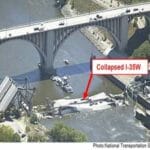- Course No E – 1258
- PDH Units 3.00
No data found for Custom Course Number
No data found for Custom Course Units
- Course No E – 1258
- PDH Units 3.00
Intended Audience: civil engineers, structural engineers, geotechnical engineers, geologists and other design and construction professionals
PDH UNITS: 3
Areas of significant frost penetration may be defined as those in which freezing temperatures occur in the ground to sufficient depth to be a significant factor in foundation design. These areas may be further characterized as seasonal frost and permafrost zones. Freeze-thaw temperature changes can exert major and potentially destructive forces on the foundations of structures. This publication discusses planning, design and construction methods for buildings and other infrastructure that can mitigate these forces in areas of significant frost penetration. Course Outline: 1. INTRODUCTION 2. FACTORS AFFECTING DESIGN OF FOUNDATIONS 3. SITE INVESTIGATIONS 4. FOUNDATION DESIGN This course will give engineers and other design and construction professionals an introduction to design of structure foundations in seasonal and permafrost regions.
Learning Objectives
At the successful conclusion of this course, you’ll be able to identify and discuss:- Learn about the characteristics of seasonal frost and permafrost and how they affect the foundations of buildings and other infrastructure;
- Learn the geographical regions of North American where significant frost penetration is an issue in design of foundations;
- Learn how the more intense the winter cooling of the frozen layer in the annual frost zone and the more rapid the rate of frost heave, affects the intensity of uplift forces in piles and foundation walls;
- Learn about the engineering problems that may arise in areas of significant frost penetration such as the difficulty of excavating and handling ground when it is frozen; soft and wet ground conditions during thaw periods; surface and subsurface drainage problems; special behavior and handling requirements for natural and manufactured materials at low temperatures and under freeze-thaw action; possible ice uplift and thrust action on foundations; condensation on cold floors; adverse conditions of weather, cost, and sometimes accessibility; in the more remote locations, limited local availability of materials, support facilities, and labor; and reduced labor efficiency at low temperatures;
- Learn about progressive freezing and frost heave of foundations that may develop under refrigerated warehouses and other similar facilities;
- Learn about the most important factors contributing to the existence of adverse foundation conditions in seasonal frost and permafrost regions; and
- Learn how freezing and thawing indexes are employed in foundation design.
Once completed, your order and certificate of completion will be available in your profile when you’re logged in to the site.










